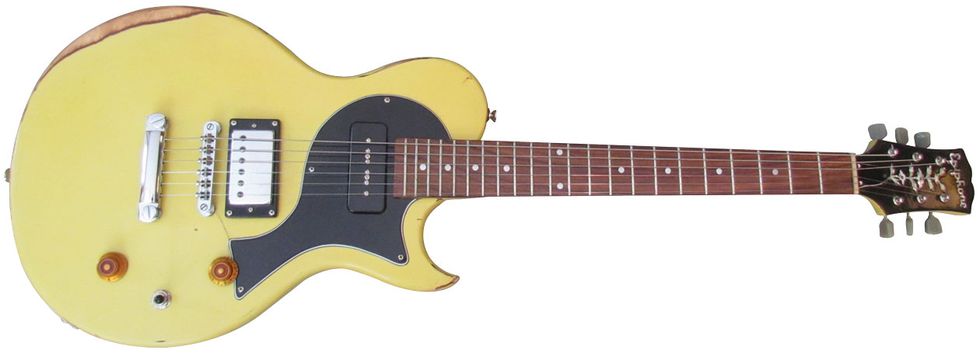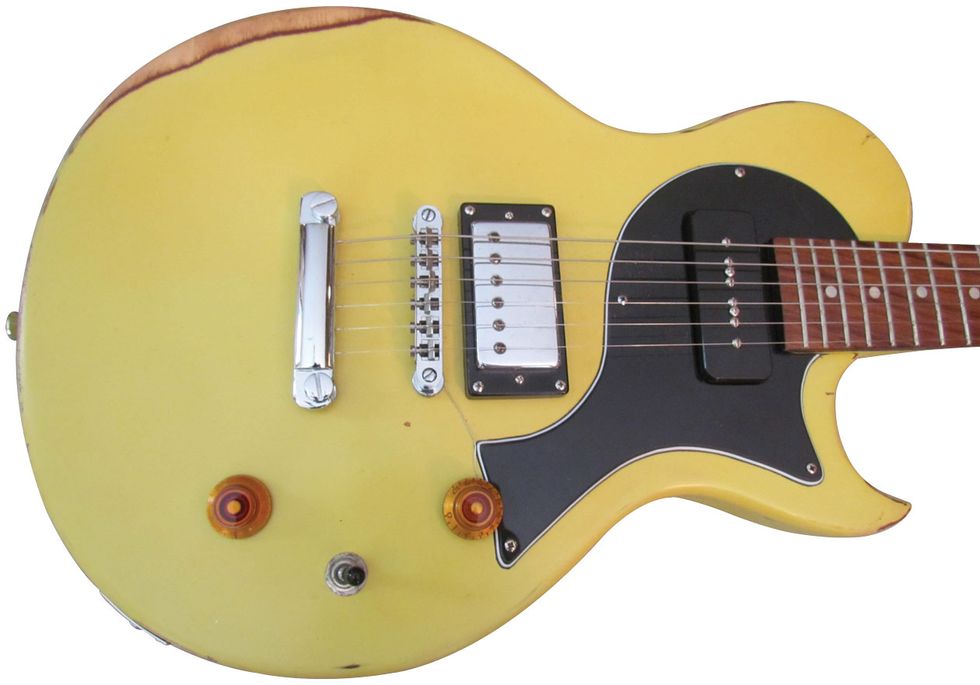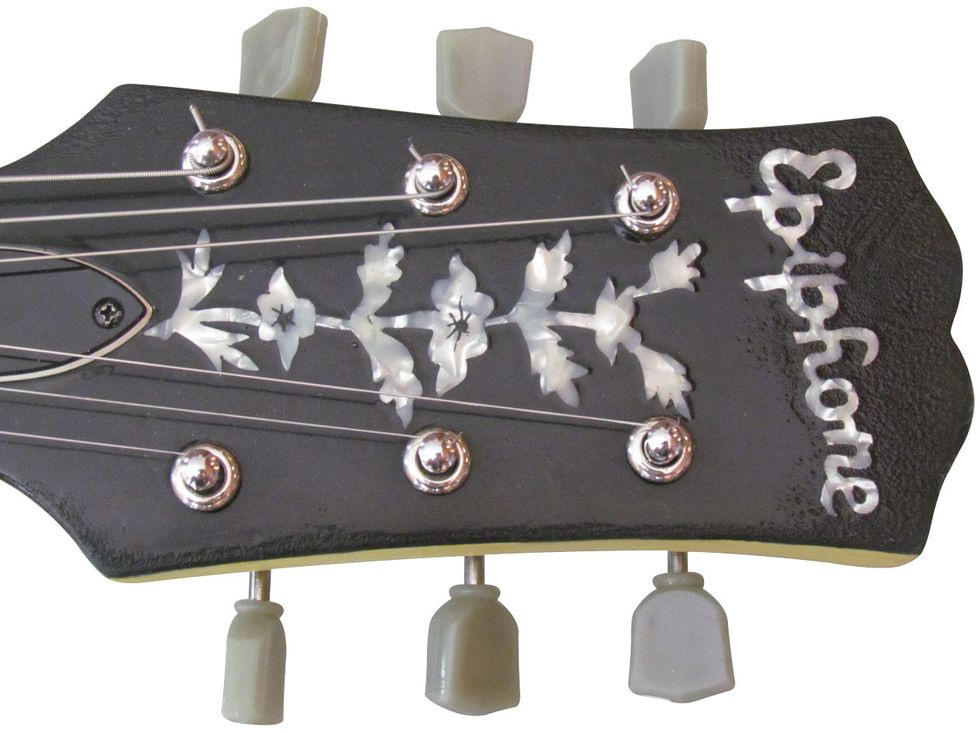I love interesting guitars. I spotted this baby a few months ago on eBay. It was listed as a “Mystery Epiphone.” The seller gave a lot of detail about how he had put the guitar together. He said he picked up the guitar’s body and neck at a flea market about five years earlier, and over time started assembling the guitar with spare parts he had on hand.
The guitar started with a handpainted black body that the eBay seller painted a dull yellow. Later, he gave it a relic’d look. He did a pretty good job on it, too, in my opinion. It looks old and worn in all the right spots.
When first found by the seller, the guitar’s headstock had “Epiphone” crudely scribbled on it with a white marker of some type. So, the seller painted the headstock black to cover it up. He then decided to try his hand at inlay work. He studied some images of Epiphone guitars and did a handmade job of inlaying the brand name at the top. After that, he had the idea to inlay the company’s “Tree of Life” design a few inches underneath the “Epiphone” logo. That’s a filigree that Epiphone uses for its top-of-the-line electrics, like the Joe Pass Emperor model. For sure, the inlay work looks a bit dodgy, but it has a kind of charm.
Although the pairing is a bit unconventional, the bridge humbucker and neck P-90 are both real Epiphone pickups.
Both pickups are genuine Epiphones. The bridge pickup is a humbucker and the neck is a soapbar P-90. The pickguard was handmade by the seller and looks pretty good. It’s a Tune-o-matic style with a stop tailpiece, and both look like Epiphone’s own.
But even by my standards, this guitar is an odd duck. I kept my eye on it on eBay for a while, because I wasn’t sure if I really wanted it. But when it got re-listed with a lower buy-it-now price of $99.99 including free shipping, I was hooked and had to pull the trigger.
It arrived a week later, and the relic’d look appeared better in person than in the pictures. The action was good, the neck felt comfortable, and it stays in tune well. And when it’s plugged into an amp, the guitar really comes to life. The bridge humbucker digs in with the right amount of growl, while the neck pickup has more warmth than you’d typically expect from a P-90, but with more high-end definition and clarity than the humbucker.
The Epiphone logo and Tree of Life design look dodgy, but it lends the guitar part of its distinctive hound-dog charm.
One interesting thing I discovered was that both pickups were wired out of phase. Normally, I would just reverse the polarity of one of the pickups, but lately I’ve been using guitars with out-of-phase pickups for tracking rhythm. It’s an old trick that L.A. studio musicians used for making a rhythm part fit into a dense song that featured lots of instruments. Listen to my MP3 and you’ll see what I mean.
By the way, I believe that this guitar started out as a real Epiphone, then someone did some weird things to it, and someone later tried to restore it. So, is it a keeper? Yeah … for now anyway. It’s a unique instrument and is just plain fun to play. What else is there?






























